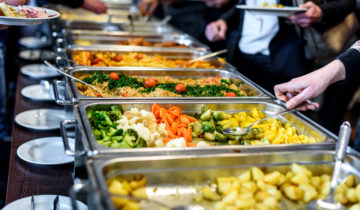Although the transition was expected, its scope is still surprising. Changes in consumer behaviour, whether in commercial restaurants, institutional catering or at home, are pushing the egg industry to speed up its transition to alternative farming methods, or run the risk of falling out of step with demand. Commitments by major actors in the field of retail and distribution to put an end to their sourcing of battery cage eggs are being compounded by an increase in “alternative” diets and the normalisation of foodtech developments.
More and more professionals are becoming receptive to demand from consumers clamouring for eggs farmed under better conditions. It is worth noting that household consumers are now able to trace the origins of an egg through its marking.
THE MEANINGS OF EGG MARKING CODES
Egg marking involves stamping a code on eggshells to provide information about their origins. It is a guarantee of traceability, in accordance with European Directive 2002/4/EC. The four egg marking levels are as follows:
- Code 3: enriched or battery cage eggs
- Code 2: cage-free (or aviary) eggs
- Code 1: free-range eggs
- Code 0: organic eggs (with an organic label).
Cocotine, a co-operative brand owned by its farmers, has committed to stopping cage egg farming. The “animal welfare cage-free eggs” range is one step in this transition which has the approval of food service actors and the support of animal welfare and consumer associations.
This Code 2 animal welfare range provides a response to the twofold issue of accessible prices, expected by the social role of the food service industry, and animal welfare, thanks to the rollout of enhanced living conditions for the hens.
For institutional catering and restaurant diners with an expectation of “non-Code 3” eggs, establishments that offer alternatively farmed eggs communicate this fact via their menus, chalkboards and posters. Eaters may ask for information about the traceability of the eggs and egg-based dishes being served.
For professionals, this had led to an increase in the partial sourcing of alternatively farmed eggs (Codes 0, 1 and 2), or even their exclusive sourcing. The fact is undeniable, but producers are struggling to attune themselves to these requirements, chiefly as a result of financial considerations. Remember, they had to invest more than €1 billion to bring their cages into compliance with European standards between 2010 and 2012, most often in the form of long-term loans (with repayment periods of up to 20 years). This transition comes with a cost that farmers are not able to assume on their own. It is therefore the responsibility of other actors in the world of food service to assist them with concrete solutions that can help them meet this challenge and the rapid rise in demand for alternatively farmed eggs, particularly since this is an irreversible trend, not just a passing fad.
WANT TO LEARN MORE ABOUT THE TRANSITION TO ALTERNATIVELY FARMED EGGS ?
Check out our white paper, which provides a comprehensive overview of the egg industry in France!







